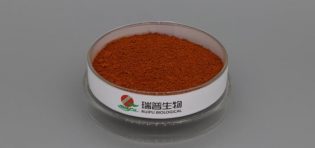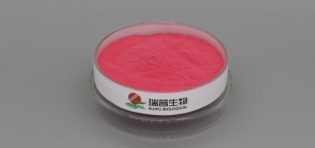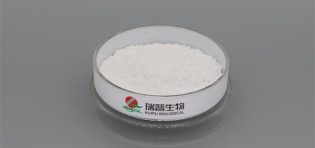
Ferrous gluconate is an organic iron salt, and its solubility is affected by factors such as solvent properties, temperature, and pH value. In pure water, the solubility of ferrous gluconate is relatively low, approximately 2-3 g/100 mL at room temperature, which is much lower than that of inorganic iron salts (e.g., ferrous sulfate, with a solubility of about 26.3 g/100 mL). This is because the gluconate group in its molecular structure has weak hydrophilicity, and the coordination bond formed between ferrous ions and gluconate groups reduces the dissociation ability of the ions, resulting in limited overall water solubility.
Under acidic conditions, the solubility of ferrous gluconate can be slightly improved. This is because hydrogen ions (H⁺) can combine with gluconate groups, weakening their coordination with ferrous ions and promoting dissociation. In alkaline environments, however, ferrous ions easily react with hydroxide ions (OH⁻) to form ferrous hydroxide precipitates, which instead reduces solubility. In addition, increasing temperature can enhance its solubility, but the increase is relatively limited. Moreover, ferrous ions are easily oxidized to trivalent iron (Fe³⁺) at high temperatures, causing the solution to change color and further reducing stability.
To improve the solubility of ferrous gluconate, optimization can be achieved through the following approaches:
Adjusting pH value
Adding an appropriate amount of organic acids (such as citric acid, lactic acid) to the solution to lower the system pH to 3-4. The acidic environment promotes the dissociation of ferrous gluconate, and organic acids can form more stable soluble complexes with ferrous ions, reducing precipitate formation. For example, citrate ions can form soluble chelates with Fe²⁺, which not only improves solubility but also enhances its antioxidant properties.
Adding solubilizers
Introducing surfactants (e.g., polysorbate 80, Tween-80) or water-soluble polymers (e.g., polyvinylpyrrolidone PVP, hydroxypropyl methylcellulose HPMC) to improve the dispersibility of ferrous gluconate through solubilization. The hydrophobic groups of surfactants can combine with gluconate groups, and the hydrophilic groups face the aqueous phase, forming micelles to wrap ferrous ions and increase their dissolving capacity in water. Polymers, on the other hand, interact with ferrous gluconate molecules through hydrogen bonds or van der Waals forces, inhibiting aggregation and improving solubility.
Preparing nanoparticles or inclusion complexes
Using nano-preparation technologies (e.g., ball milling, emulsion-solvent evaporation) to convert ferrous gluconate into nano-sized particles. Reducing the particle size increases the specific surface area, thereby improving the dissolution rate and solubility. In addition, using the cavity structure of cyclodextrins (e.g., β-cyclodextrin) to form inclusion complexes with ferrous gluconate, the hydrophilic outer shell of cyclodextrins can enhance the overall water solubility while protecting ferrous ions from oxidation.
Compound with other water-soluble substances
Compound ferrous gluconate with water-soluble carbohydrates (e.g., sucrose, glucose) or polyols (e.g., glycerol, sorbitol). The strong hydrophilicity of these substances improves the overall polarity of the solution, promoting the dissolution of ferrous gluconate. For example, sucrose molecules can interact with gluconate groups through hydrogen bonds, weakening their binding with ferrous ions and increasing the degree of dissociation.
Controlling oxidation state
Ferrous ions (Fe²⁺) are easily oxidized to trivalent iron (Fe³⁺), and the complex formed by Fe³⁺ and gluconate groups has lower solubility and tends to produce brownish-yellow precipitates. Therefore, adding antioxidants (e.g., vitamin C, sodium sulfite) during the dissolution process can maintain the stable state of Fe²⁺, indirectly avoiding solubility reduction caused by oxidation.
These methods can effectively improve the solubility of ferrous gluconate by adjusting the chemical environment, optimizing intermolecular interactions, or changing physical forms, making it more suitable for fields such as food fortification, nutritional supplements, or pharmaceutical preparations.








